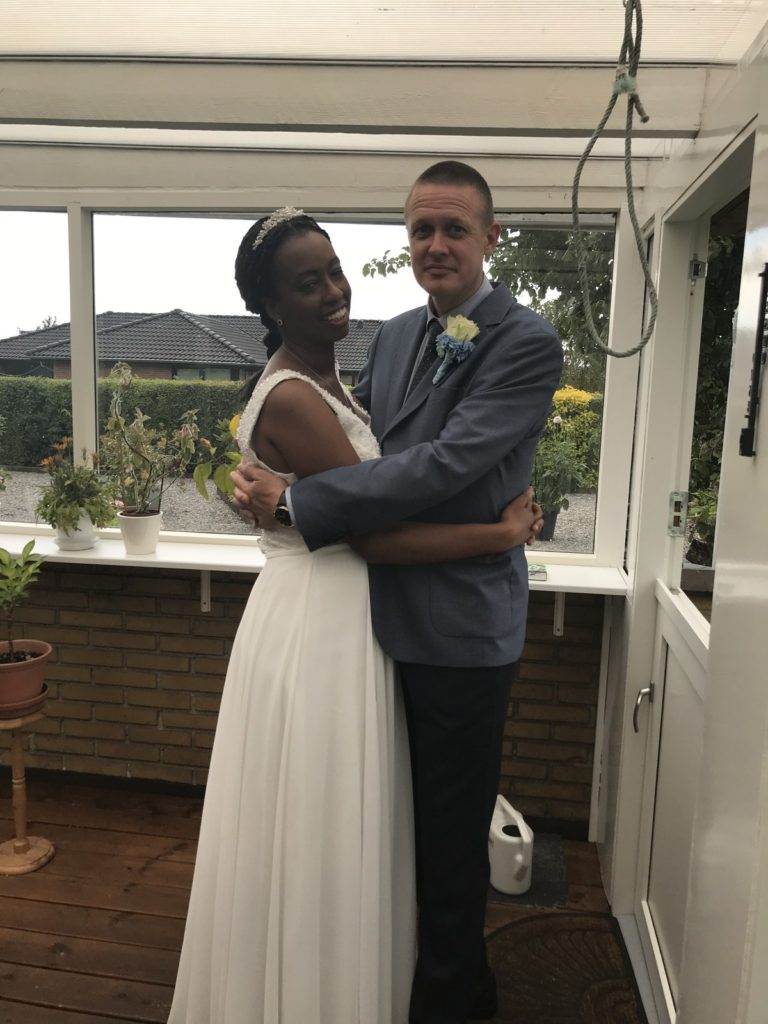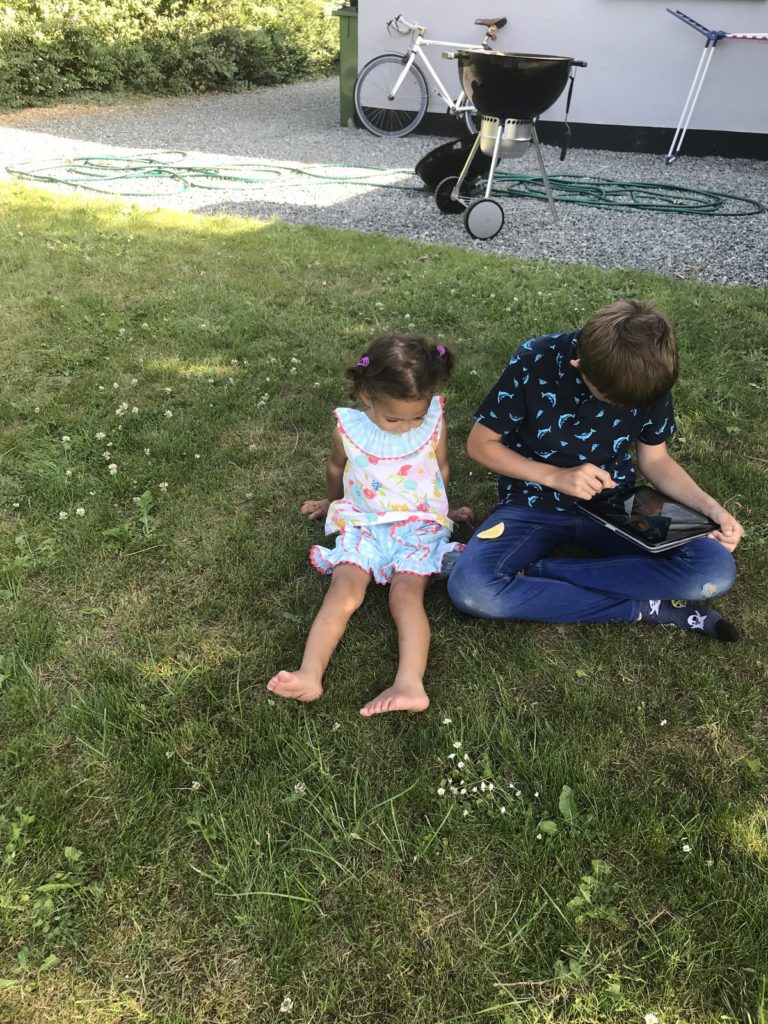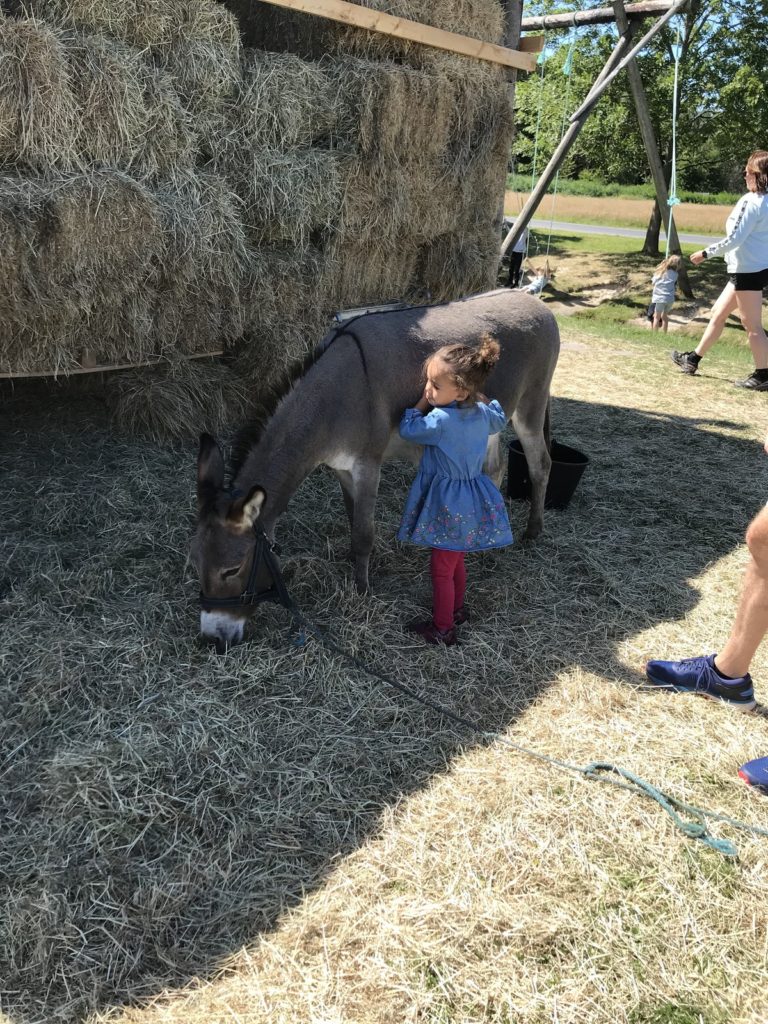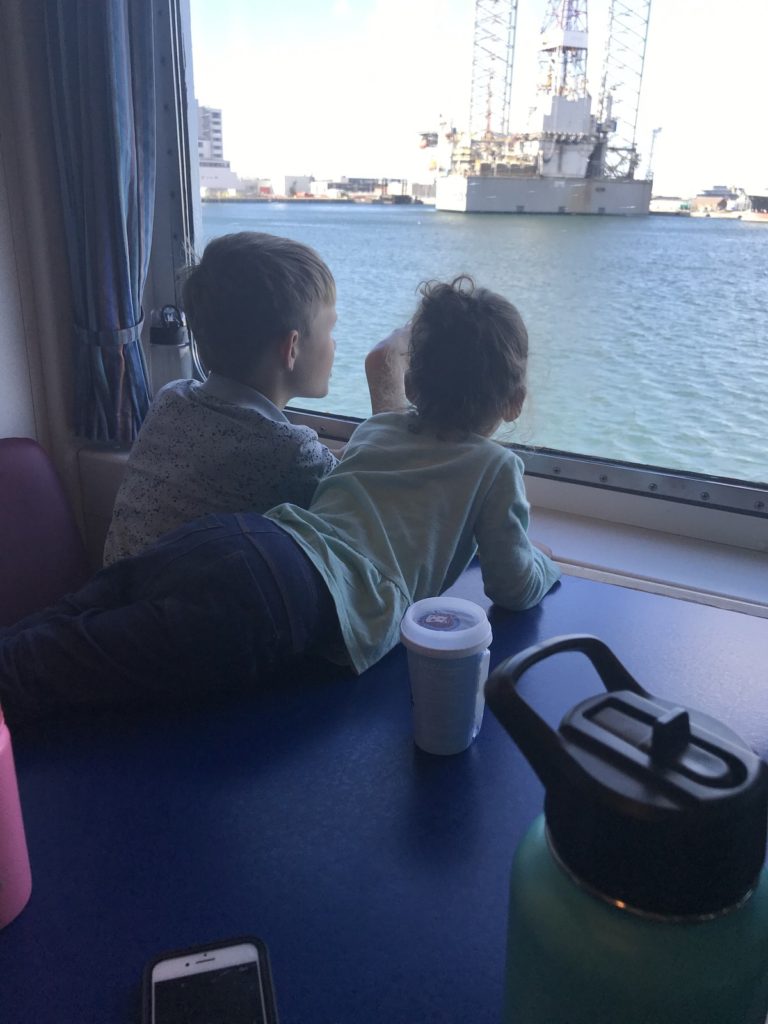I watch her. This love of mine. The answer to years of hopes, prayers, and tears. I watch her as she dances. Body bending. Legs moving. Smile lighting up her beautiful face.
This precious girl has no idea that the world around her has changed due to COVID-19. She has no idea that because of this virus, our dream of having another child might never become a reality. Her joy and innocence radiate from her as she throws herself fully into her dance. Precious girl of mine. So full of life and love.
I will tell her that I was told that it would be nearly impossible for my body to grow life. To grow her.
One day, I will tell her the story of the miracle she is to our lives. How both her daddy and I both wanted her for a very long time. How her older brother, my stepson, asked us for a sibling, and she was the answer. I will tell her that I was told that it would be nearly impossible for my body to grow life. To grow her.
I will tell her that it took a bad marriage to bring her half Black American/half Bahamian mother across the ocean to a small Nordic country, which would open the doors for her birth. I will tell her the story of how she came to be a part of our world. And how much we love her.

The beginning of that story takes place in California, where I lived with my ex-husband when I was diagnosed with “severe” polycystic ovary syndrome (PCOS), a fairly common hormonal disorder that affects many women. Women with this disorder often have irregular menstrual cycles and tend to have an excess of the hormone androgen (a male hormone), which causes more hair than normal to grow on the face and body. When a woman’s ovaries have cyst-like, fluid-filled follicles on them, her ovaries are said to be polycystic. This is what causes the irregular menstrual cycles.
I knew I had irregular periods and was always plucking and waxing my face and body to get rid of extra hair when I went to the doctor. Even so, when he suggested a scan to look at my ovaries, I did not think anything of it. That nonchalance turned to shock and grief when the doctor told me that he had not seen ovaries that were so polycystic before and that my chances of bearing my own children were slim.

I moved to Denmark about 18 months after I got my diagnosis. My marriage fell apart after the move, but I refused to give up my desire to have a family. I dove back into the dating scene, and it was hard. I met so many men who wanted to “try” a Black American woman. I met men who already had children but wanted a relationship with me as long I gave up my dream of having children. They felt they had the children they wanted and did not want more. I was not willing to give up my dream for a man who was not willing to raise a family with me.
I had just about given up when I met Brian. We met on a Danish dating site, and he looked at my profile a few times over several months. When he finally contacted me, it was obvious a connection was there. Brian told me about his little boy, whom he has half of the time. Brian told me he wanted more children and that if I was not interested in that, we were not right for each other.
I had fallen in love with Brian before I told him about my PCOS. But I knew I had to.
We met for the first time on a cold, rainy, dark Danish autumn day in November, and I knew he was the one. I also knew that I was not going to make it easy for him. One of the first things I told him was that I was not going to be his exotic “black adventure.” He looked at me, his blue eyes twinkling, and laughed. Turns out his first girlfriend was an Black American woman with a West Indian background.
I had fallen in love with Brian before I told him about my PCOS. But I knew I had to. One morning, I sat on the edge of the bed and cried as I told him, knowing he could very well leave. Brian took me in his arms and kissed me on my forehead. He told me that he loved me and that he was not going anywhere. He also reminded me that we live in Denmark, where fertility treatment was free and that we would get the family we both wanted. I believed him.

I speak Danish with an accent but communicate fairly well when I speak slowly so that it is easier for Danes to understand me. That did not stop me from being challenged by the fertility system. Understanding fertility treatments is hard enough when you are speaking your own language. Navigating them when you are speaking a second language can be crushing. There were days I would come home and just cry because I was so overwhelmed and afraid that I had missed important information because I do not understand many medical terms in Danish. Eventually, I went to appointments only if Brian was with me. It was hard being the obvious foreigner.
People would make assumptions about me that were hurtful. One lady, assuming I was from a poor African country, asked if I ever imagined I would live in a place where I would have access to such treatments. She was very embarrassed when I told her I was American and that not all Africans are poor. I went home and cried. But that could have just been the hormones. There was a particular doctor that you could see becoming frustrated when I did not always understand everything that was said and had to ask Brian to explain.
But I knew that I wanted a baby, and despite the language barrier and other challenges I experienced, I got the IVF treatments I needed. In Denmark, you are allowed three rounds of insemination and three rounds of IVF that are paid for by the system with our tax dollars. We only pay for the medicine, which is fairly affordable.
There were so many hormone shots needed to get my body ready for insemination. And so many scans. After our first two rounds of insemination failed, one of the doctors suggested that we forego the last insemination and skip directly to our first IVF treatment. This suggestion gave me knots in my stomach, as I did not want to miss a single chance to become a mother. But and Brian talked me into trusting the experts.
I gave myself more shots and dealt with more mood fluctuations due to the hormones. I spent more time getting scans until my body was ready for egg retrieval. It was early on a cold, gray Danish morning when Brian and I headed for the hospital. Finally, the doctors were able to retrieve 18 eggs and told us that they would let us know if any of them were viable after they fertilized them with Brian’s sperm.
Those next few days were hell as we waited. I kept checking my messages to see if there was a chance that my dreams of being a mother would come true.
As we realized how serious the situation was, we also realized that our dreams of expanding our family might not be fulfilled as a result of Denmark stopping non-essential hospital services in March.
Finally, we got the message. We had three viable eggs from our first round of IVF. I was so relieved and scared at the same time. I knew that there was a chance the eggs would not take and that I could end up with nothing. A few weeks later, one of those eggs was transplanted, and about a week and a half later, we got the message that I was pregnant.
My beautiful, miracle girl was born in January 2018, and we desperately want to give her another sibling. Brian and I planned to use the two eggs left over from our IVF cycle this year. That was before COVID-19 hit. As we realized how serious the situation was, we also realized that our dreams of expanding our family might not be fulfilled as a result of Denmark stopping non-essential hospital services in March.

We both want another child. We are a couple in our 40s who are running out of time, and I resent COVID for taking that time from us. In Denmark, hospitals are now open again, and our family is deciding whether to proceed. This has proven to be stressful. What if we start the process and have to stop because COVID numbers go up? Denmark only stores eggs for five years by law, which means we are running out of time to use our remaining eggs. There is also an age limit regarding our next IVF, and at 42 I am at that limit. We would have to go to a private clinic if we want another round of IVF. The fact is that we do not have three to four years to wait.
So for now, as we make this decision, I watch her. This love of mine. The answer to years of hopes, prayers, and tears. I watch her as she dances. Body bending. Legs moving. Smile lighting up her beautiful face.
My hope is that one day soon she will be doing this dance with her younger sibling, and that their joy and innocence will radiate through them. One day, I will tell them how we both wanted them for a very long time. How their older brother, my stepson, asked us for another sibling, and that youngest baby was the answer to that wish.
I will tell them the story of how they came to be a part of my world. And how much I love them all.
Like this piece? Subscribe to our newsletter for real stories about women on their journey to motherhood.
